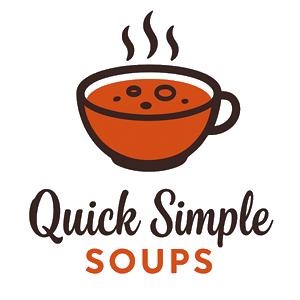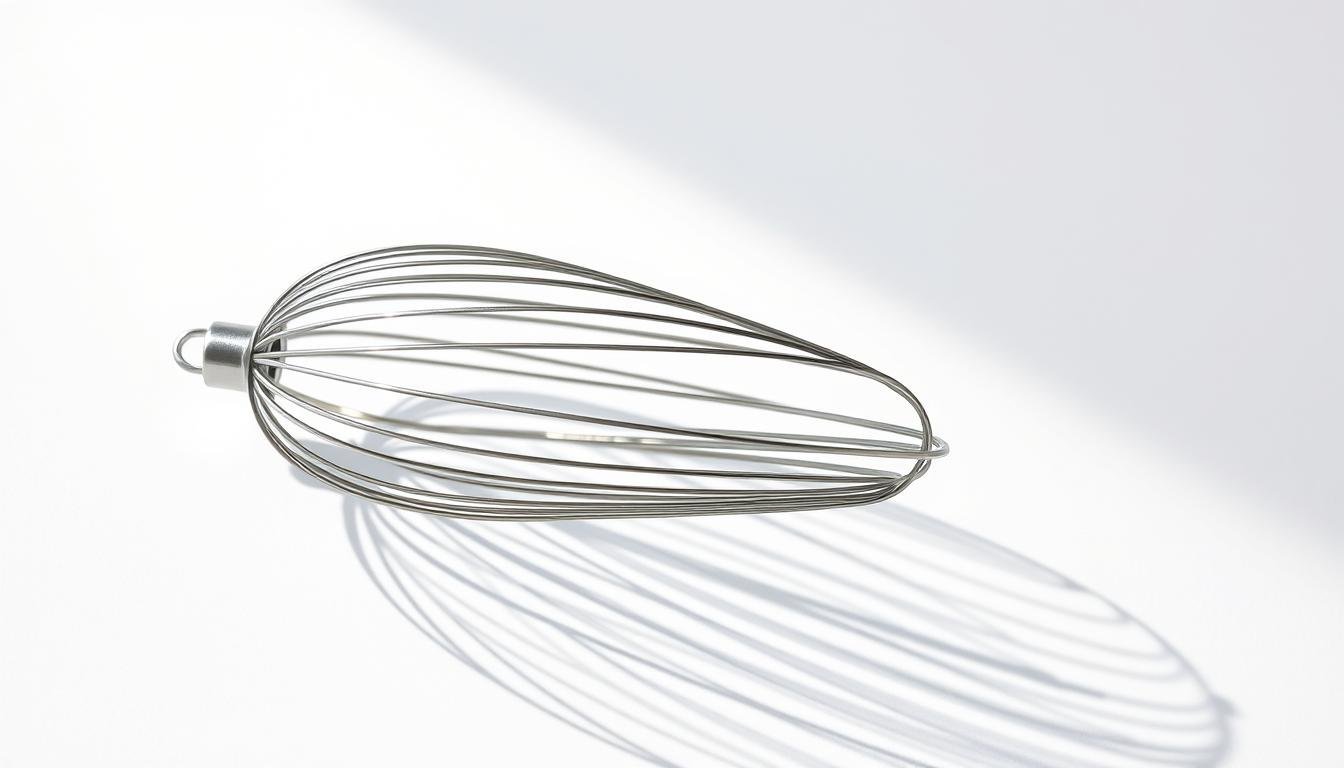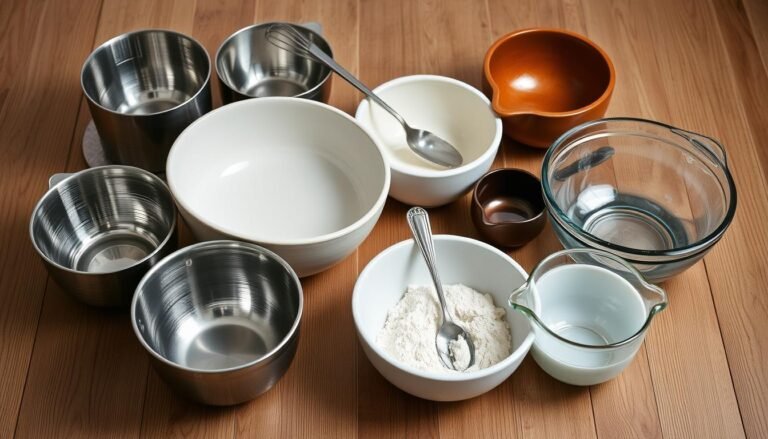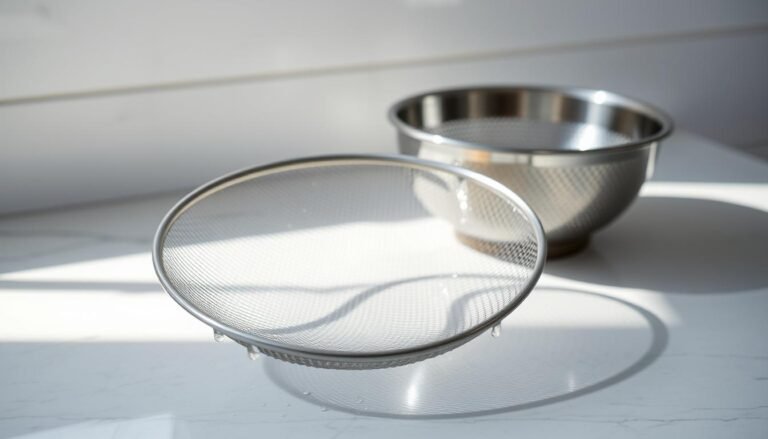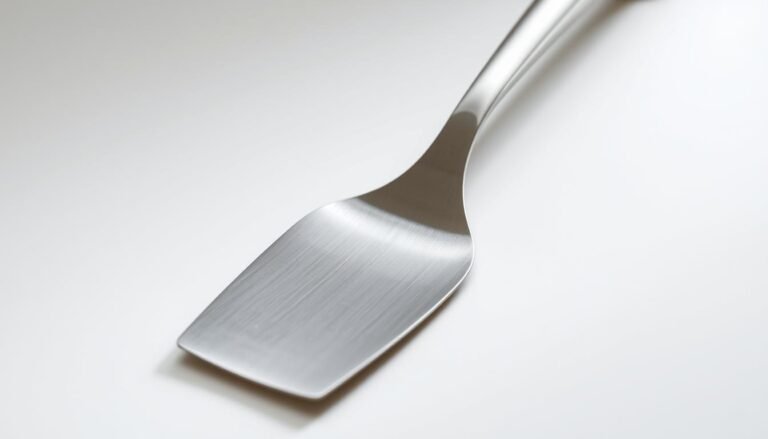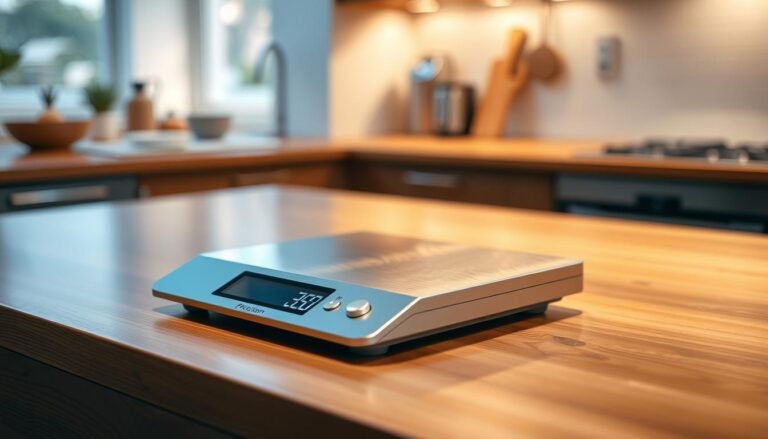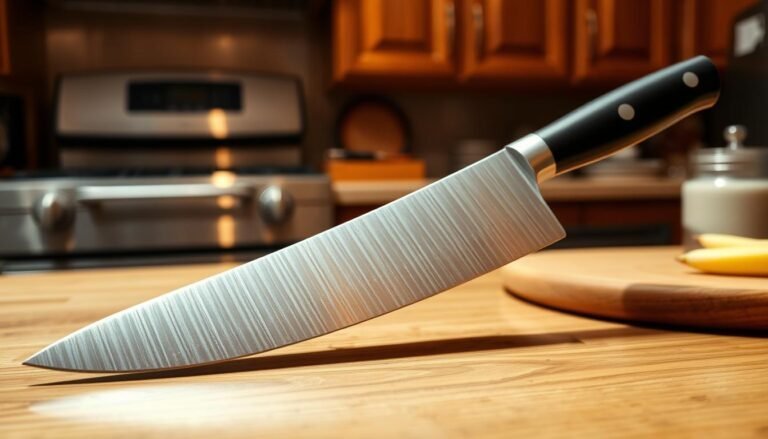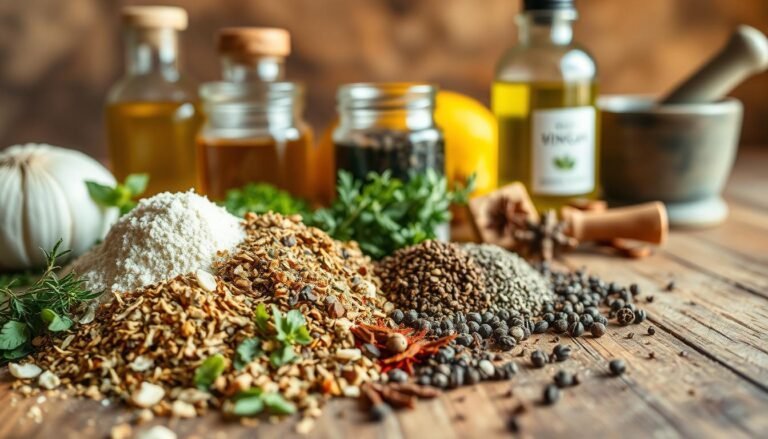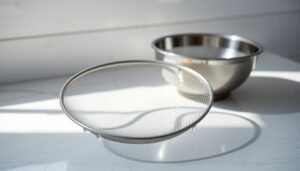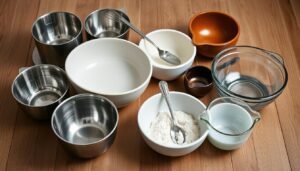Disclosure: This Post Contains Affiliate Links; We earn a commission on purchases.
In many professional kitchens, a simple tool is highly valued. The whisk is a key tool for many tasks. It’s loved by chefs and home cooks for its versatility.
A whisk is a kitchen essential because it mixes, blends, and aerates ingredients well. It’s perfect for making sauces or meringues. This tool is ready for any task.
Key Takeaways
- A whisk is a versatile tool used in various cooking and baking tasks.
- It’s an essential item in many professional kitchens.
- The whisk’s simplicity makes it easy to use and clean.
- It’s effective for mixing, blending, and aerating ingredients.
- A whisk is a must-have for both chefs and home cooks.
The Humble Whisk: An Unsung Kitchen Hero
In the world of cooking, the whisk is a key tool. It has been around for centuries. It helps mix, blend, and aerate ingredients.
The Evolution of the Whisk Through Culinary History
The whisk has changed a lot over time. It started with twigs and now has fancy designs. Its changes show how cooking and baking have evolved.
Why Every Kitchen Needs at Least One Whisk
Every kitchen should have a whisk. It’s great for beating eggs and mixing sauces. The hand whisk is special because it gives you control, no matter the size of the task.
Understanding Different Types of Whisks
There are many types of whisks, like balloon and flat whisks. Each is made for different cooking tasks. Knowing about these whisks helps you pick the right one for your cooking.
Balloon Whisks: The Classic All-Purpose Option
The balloon whisk is great for many things. It’s good for mixing sauces, beating eggs, and blending ingredients. Its shape makes mixing in deep bowls easy.
French Whisks: Slimmer and More Precise
French whisks are thinner and more precise. They’re best for whisking sauces or dressings. Their shape also helps when mixing in narrow places.
Ball Whisks: For Delicate Mixing Tasks
The ball whisk has a ball-shaped head. It’s gentle on ingredients, making it great for delicate mixing. It’s perfect for mixing thick batters or sauces.
Flat Whisks (Roux Whisks): Perfect for Sauces
Flat whisks, or roux whisks, are for mixing sauces and gravies in pans. Their flat shape helps scrape the bottom of the pan. This ensures no ingredients are left behind.
Knowing about each whisk’s special features helps you pick the best one. This makes your cooking better and more enjoyable.
Hand Whisk vs. Electric Whisk: Choosing the Right Tool
Choosing between a hand whisk and an electric whisk depends on several things. These include the task at hand and what you prefer. Each tool has its own benefits and is best for different cooking tasks.
The Tactile Control of Hand Whisks
Hand whisks give you control you might like. They let you mix and blend with precision, even in small bowls or pots. The effort you put in helps you feel the texture and consistency of your mix.
For making delicate sauces or dressings, a hand whisk is often the best choice.
When to Upgrade to an Electric Whisk
Electric whisks are great for tasks that need more power and speed. They’re perfect for beating eggs or cream in big amounts. They save time and effort, making them great for frequent bakers or those with lots to mix.
For more info on electric mixing, check out this hand mixer shopping guide.
Whisk Attachments for Stand Mixers
If you have a stand mixer, whisk attachments are a smart choice. They fit right onto the mixer, making it a strong whisking tool. They’re great for whipping cream or beating egg whites, needing both power and precision.
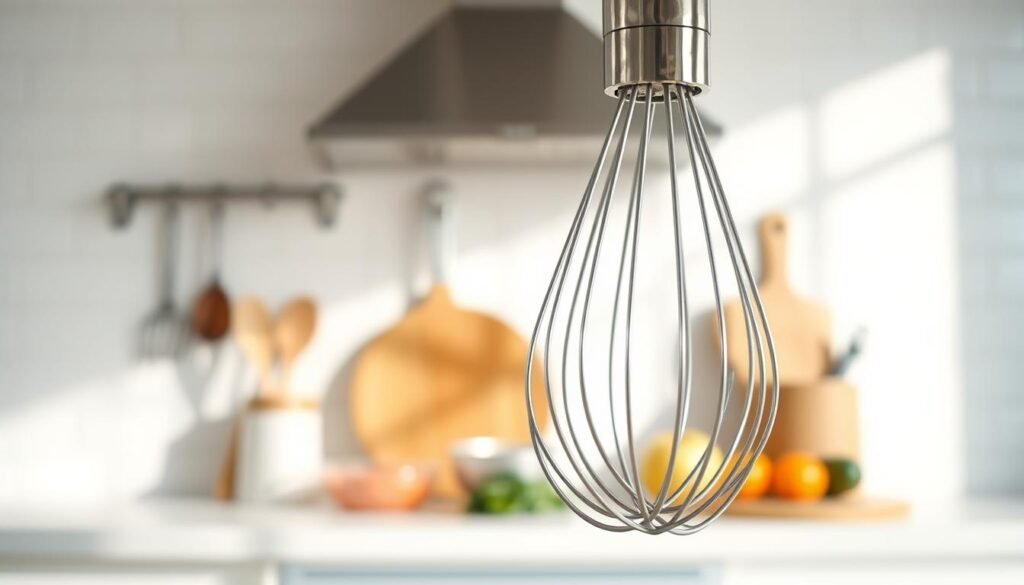
Material Matters: Stainless Steel Whisk vs. Silicone Whisk
Choosing the right whisk is important. The material it’s made of affects its performance and how long it lasts. Stainless steel and silicone whisks each have their own strengths.
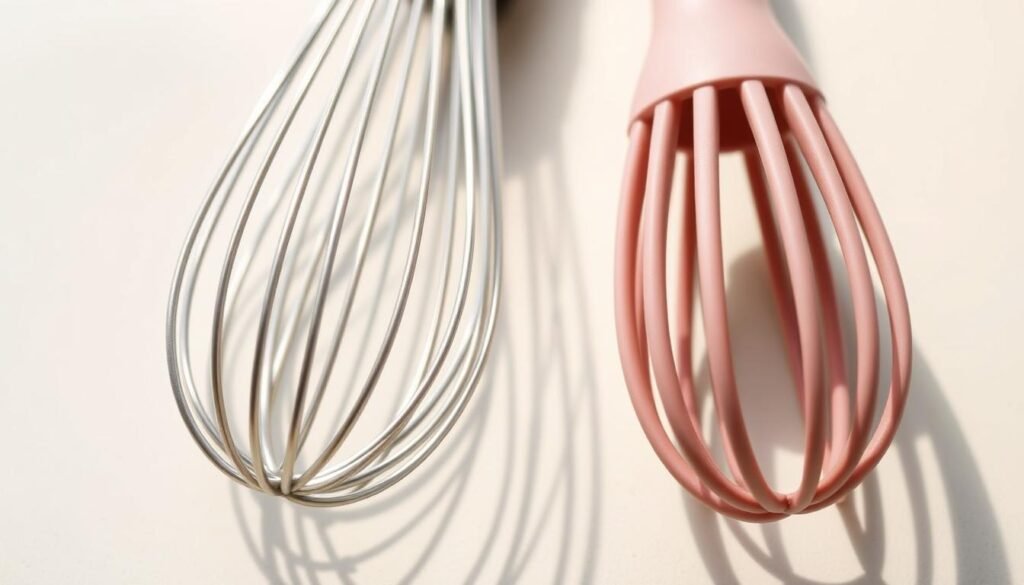
The Durability of Stainless Steel Whisks
Stainless steel whisks are known for being tough and not rusting. They can handle a lot of use without breaking or bending.
Maintenance and Longevity
Stainless steel whisks are easy to clean. You can wash them with soap and water. Some can even go in the dishwasher, keeping them in great shape for a long time.
Best Uses for Metal Whisks
Stainless steel whisks are great for tasks that need some strength. They’re perfect for beating eggs or mixing thick batters.
The Gentle Touch of Silicone Whisks
Silicone whisks are softer and better for non-stick pans. They’re flexible and won’t scratch your cookware.
Non-Scratch Benefits for Coated Cookware
Silicone whisks are perfect for non-stick pans. They help keep your pans looking new.
Heat Resistance Considerations
Silicone whisks can handle high heat. But, always check the maker’s advice on how hot they can get.
Hybrid Designs: Getting the Best of Both Worlds
Some whisks mix stainless steel and silicone. They have a strong handle and flexible wires. These hybrids aim to offer both durability and gentleness.
- Durability: Stainless steel whisks are more durable.
- Non-stick safety: Silicone whisks are safer for non-stick cookware.
- Versatility: Hybrid whisks offer a balance between durability and flexibility.
Choosing between stainless steel, silicone, or hybrid whisks depends on your cooking needs and what you like.
Essential Whisking Techniques Every Home Cook Should Master
Learning to whisk well is key for home cooks. It affects the texture and consistency of many dishes. This includes sauces, dressings, batters, and egg whites.
The Perfect Whisking Motion for Different Tasks
The whisking motion changes with the task. A smooth motion works best for sauces. But, a fast, strong motion is better for egg whites or cream. Knowing the right technique for each ingredient is essential.

Common Whisking Mistakes to Avoid
One big mistake is not whisking enough, causing lumps. Another is whisking too hard, leading to splashes. Knowing these mistakes helps cooks improve their skills.
How to Prevent Arm Fatigue During Extended Whisking
To avoid arm tiredness, use a comfortable whisk. Also, take breaks and use your wrist and forearm. This spreads out the effort, easing arm strain.
Mastering whisking techniques greatly improves cooking and baking. It ensures dishes come out just right.
Beyond Eggs and Cream: Unexpected Uses for Your Whisking Tool
Whisks are not just for eggs and cream. They have many uses in the kitchen. They are a must-have for both home cooks and chefs.
Using a Whisk for Lump-Free Sauces and Gravies
A whisk is key for smooth sauces and gravies. It helps break down lumps, making the texture silky. This is very helpful when making bechamel sauce or gravy.
- Constant whisking prevents lumps from forming.
- Whisking incorporates air, making the sauce lighter.
- A flat whisk is best for sauces cooked in a pan.
Whisking Salad Dressings to Perfect Emulsion
Whisking is vital for salad dressings. It helps mix oil and vinegar smoothly. This makes the dressing coat salad greens well.
Tips for a perfect emulsion:
- Start with a small amount of oil and gradually add more.
- Whisk constantly to prevent separation.
- Use a pinch of salt or mustard to help stabilize the emulsion.
Incorporating Air into Batters for Lighter Baked Goods
Whisking is important for aeration in batters. This makes cakes, pancakes, and other goods light and fluffy.
To get more air, whisk wet ingredients first. Then gently mix them with dry ingredients.
Whisking Spice Blends and Dry Ingredients
A whisk is great for mixing spice blends and dry ingredients. It makes sure spices are evenly spread. This is key for consistent flavor in your dishes.
- Use a whisk to mix spices into flour or other dry ingredients.
- Whisking helps to break up any clumps in spices or ingredients.
- A dry whisk can be used to sift ingredients, ensuring they are well incorporated.
How to Choose the Best Whisk for Your Baking and Cooking Needs
A good whisk is more than a kitchen tool. It’s a key to better cooking. When picking the best whisk, many things matter.
Assessing Handle Comfort and Grip
The whisk’s handle comfort is key. Find one with an ergonomic handle. It should give you a secure grip and not tire you out.
Size Considerations for Different Cooking Tasks
The whisk’s size matters for different tasks. A big whisk is great for mixing lots. A small one is better for small tasks or tiny containers.
Budget-Friendly vs. Professional-Grade Options
Whisks vary from budget-friendly to professional-grade. Budget-friendly ones are okay for casual cooks. But, professional-grade whisks last longer and perform better for those who cook a lot.
Think about handle comfort, size considerations, and your budget. This way, you’ll find the best whisk for your needs.
Conclusion: The Whisk – Small Investment, Big Culinary Impact
A whisk is more than a simple kitchen tool. It’s a kitchen essential that can make your cooking and baking better. With a small investment in a good whisk, you can see a big culinary impact.
Whether you’re making a meringue, beating eggs, or mixing sauces, a good whisk is key. It makes a big difference in your dishes.
There are many types of whisks, like balloon, French, and flat. Each one is good for different tasks. By picking the right whisk, your dishes will be well-mixed and your sauces smooth.
Adding a whisk to your kitchen is a smart move. It’s a simple way to make your cooking and baking better. With its many uses, a whisk is a valuable tool in any kitchen. It offers a big culinary impact for a small investment.
FAQ
What is the primary function of a whisk in the kitchen?
What are the different types of whisks available, and how do I choose the right one?
What is the difference between a hand whisk and an electric whisk?
What are the benefits of using a stainless steel whisk versus a silicone whisk?
How do I properly clean and maintain my whisk?
Can I use a whisk for tasks other than whipping eggs or cream?
What features should I look for when choosing a whisk?
Are there any specific whisking techniques I should master?
Can I use a whisk attachment with my stand mixer?

Ryan Conlon is the comfort food fan behind QuickSimpleSoups.com, where he shares easy soup ideas, smart shortcuts, and helpful tips for busy home cooks. Ryan believes a good bowl of soup doesn’t need to be complicated—and he’s here to prove it. Whether you’re looking for quick weeknight meals or cozy classics with a twist, Ryan’s simple approach helps you serve up satisfying soups with minimal effort.
Subscribe to Our Newsletter
